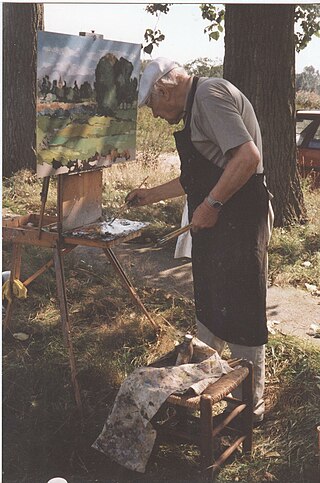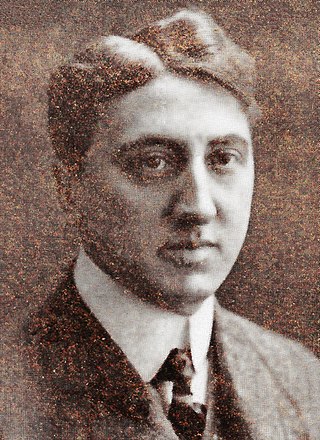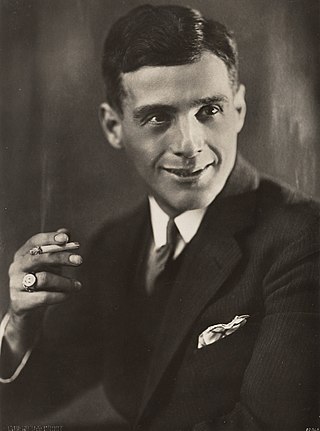Kees van Baaren was a Dutch composer and teacher.

Cornelis Kist is a Dutch former professional footballer and manager. He played as a striker, and most notably won the European Golden Shoe for the 1978–79 season.

Cornelis "Kees" Bol was a Dutch painter and art educator. His work was exhibited in art galleries and museums throughout the Netherlands, as well as in Paris. In 1950 Bol was awarded the Thérèse van Duyl-Schwartze Prize and in 1982 he was made Knight in the Order of the Netherlands Lion.
Liefde waakt is a 1914 Dutch silent Western film directed by Louis H. Chrispijn.
Fatum is a 1915 Dutch silent drama film directed by Theo Frenkel.
De vrouw Clasina is a 1915 Dutch silent drama film directed by Maurits Binger.
Ontmaskerd is a 1915 Dutch silent drama film directed by Mime Misu.
Pro domo is a 1918 Dutch silent drama film directed by Theo Frenkel.
Bleeke Bet is a 1934 Dutch comedy film directed by Alex Benno and Richard Oswald.
Een dubbeltje te weinig is a 1991 Dutch film directed by André van Duren and written by Peter van Gestel. It was released internationally under the title A Penny Too Short.

Jan van Dommelen was a Dutch film actor of the silent era. He appeared in 44 films between 1911 and 1939.
Alex Benno was a Dutch film actor, screenwriter and director of the silent era. He appeared in 15 films between 1913 and 1920.
The Tollens-Fonds " is a Dutch organization named for poet Hendrik Tollens (1780–1856). The organization awards a notable literary prize, the Tollens Prize and till 2008 also the Jacobson Prize.

Kunst zij ons doel, or KZOD, is the name of an artists club in the Waag, Haarlem.

Herman Bouber, born Hermanus Blom was a Dutch actor, screenwriter and playwright. He was married to the actress Aaf Bouber.

The Jordaanlied is a type of levenslied, the Dutch genre of nostalgic sentimental popular music; the Jordaanlied hails from and sings the praises of the Amsterdam neighborhood the Jordaan which, until the 1960s, was an impoverished working-class area. The genre first came to the fore in the late 19th century and reached extraordinary popularity in the 1950s, before becoming old-fashioned quickly when rock and roll came along. It continues to be sung in the now-yuppified Jordaan, as a local favorite and a tourist attraction in a profoundly changed neighborhood; already a nostalgic genre when it was first made popular, the situations it describes and the emotions it evokes are no longer directly accessible even by the older generations, a transformation due in part to the Jordaanlied itself.

Louis Davids was a Dutch actor, singer, comedian and revue artist. He is widely considered one of the biggest names in Dutch performing arts.
Events in the year 1934 in the Netherlands.

Onze Kunst van Heden was an exhibition held in the winter of 1939 through 1940 at the Rijksmuseum in Amsterdam. Due to the threat of invasion in the years leading up to World War II, the Netherlands' government stored many items from the Rijksmuseum's permanent collection. The resulting empty gallery space was utilized by contemporary Dutch artists to exhibit and sell their art. It was organized by the director of the Rijksmuseum Frederik Schmidt Degener. The show was open to all artists, with each artist allowed to enter four pieces. 902 artists exhibited 3,200 works of art in 74 rooms and cabinets of the Rijksmuseum.
„De kunstenaar kan in tijden van maatschappelijke benauwenis weinig positiefs doen om rampen af te wenden, maar wel kan hij door mede te helpen nationale uitingen op het eigenaardigst naar voren te brengen het gemeenschapsbesef versterken. Wanneer de belangstelling van het publiek uitgaat naar deze manifestatie, die in zulk een omvang in Holland nog niet gezien is, dan zal menige kunstenaar zich op zijn beurt gesterkt voelen".
"The artist can do little positive in times of social distress to avert disasters, but he can, by helping to bring out national expressions in the most idiosyncratic way, strengthen the sense of community. When the public is interested in this event, which has not yet been seen to such an extent in Holland, many artists will feel strengthened in turn."
This page is based on this
Wikipedia article Text is available under the
CC BY-SA 4.0 license; additional terms may apply.
Images, videos and audio are available under their respective licenses.







